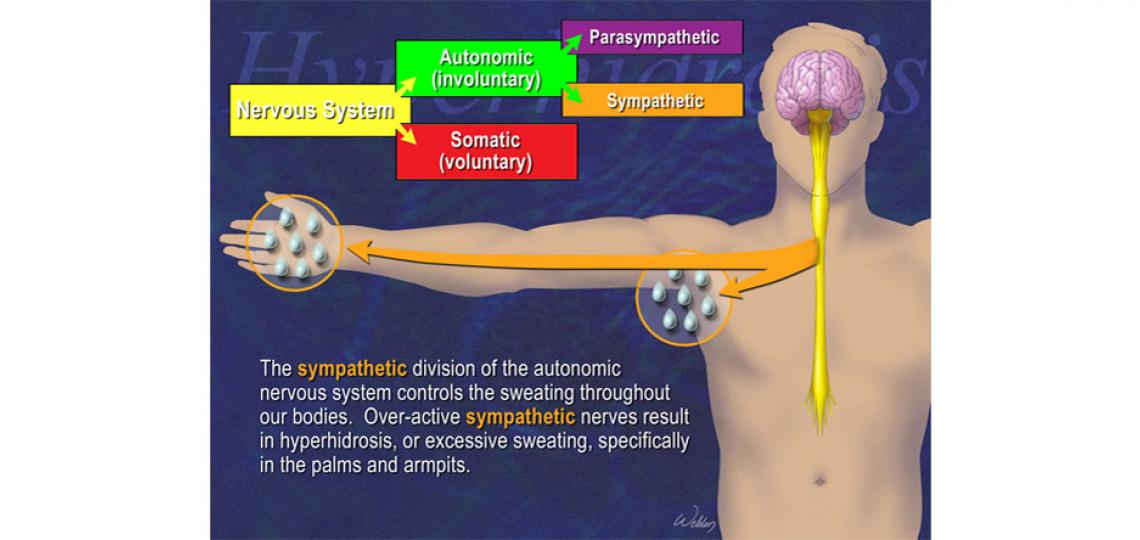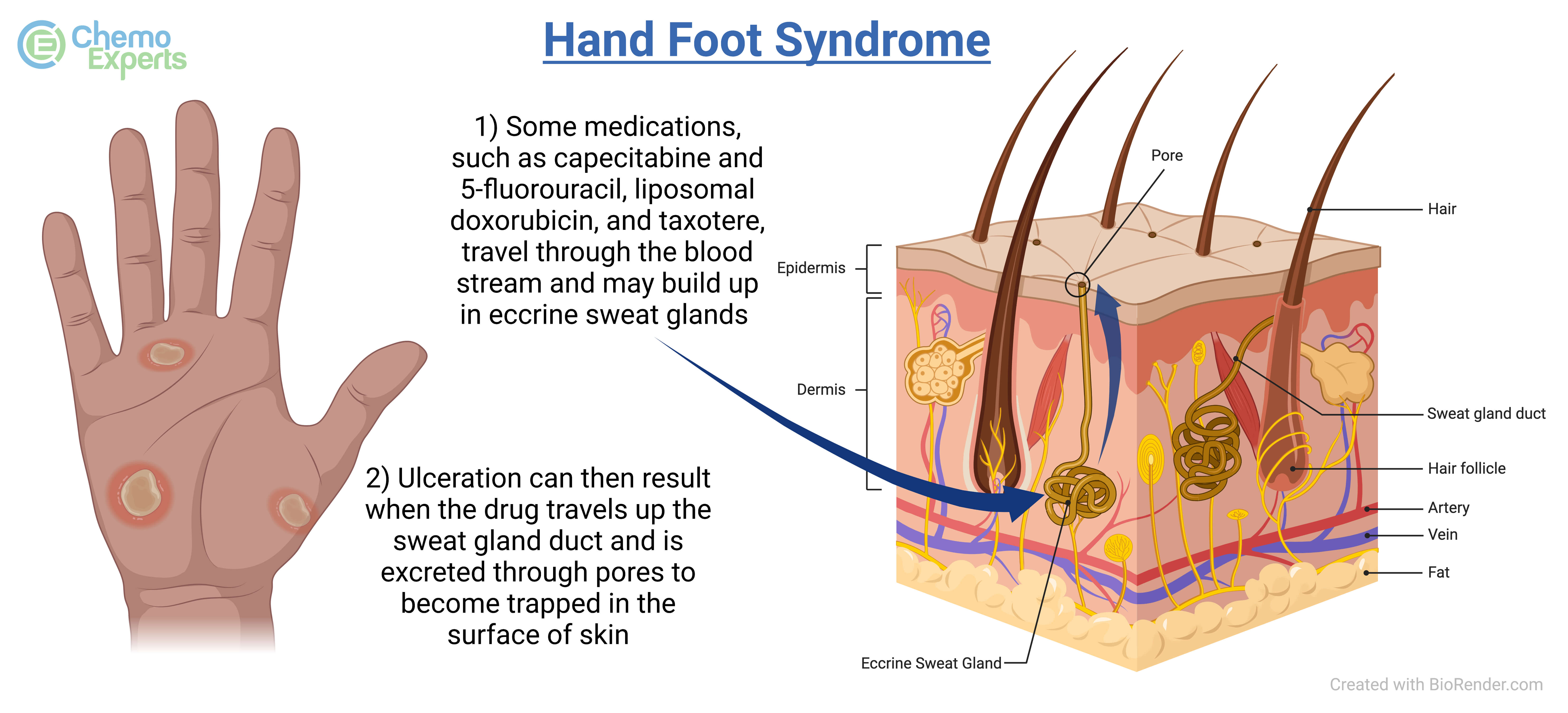Introducing the Complexities of Excessive Sweating: A Comprehensive Guide to Medical Diagnosis and Monitoring
Excessive sweating, medically recognized as hyperhidrosis, is a problem that impacts a significant number of people and can have an extensive effect on their top quality of life. While sweating is a natural bodily function, its overactivity in hyperhidrosis presents a distinct collection of challenges that typically go past mere discomfort. Comprehending the underlying causes, acknowledging the signs and symptoms, and browsing the analysis procedure for hyperhidrosis can be intricate tasks. In this extensive guide, we will check out the intricacies of hyperhidrosis, from its medical diagnosis to the variety of therapy alternatives readily available, clarifying reliable monitoring strategies for those grappling with this condition.

Recognizing Hyperhidrosis Causes
Hyperhidrosis causes can be connected to numerous variables such as genes, hormonal imbalances, and certain clinical problems. Genetics play a significant duty in main focal hyperhidrosis, where individuals inherit the condition from their relative. This sort of hyperhidrosis frequently manifests in particular areas like the palms, soles of the feet, underarms, and face. Hormonal discrepancies, specifically an overactive thyroid gland or menopausal changes, can also cause excessive sweating. Furthermore, specific clinical problems such as diabetes mellitus, heart problem, and infections can lead to secondary generalized hyperhidrosis. These underlying wellness concerns can disrupt the body's natural cooling system, triggering the sweat glands to come to be over active. Understanding the origin triggers of hyperhidrosis is crucial in identifying and properly handling this condition. By identifying the specific elements contributing to excessive sweating, doctor can customize therapy plans to deal with the underlying cause, using alleviation and enhancing the lifestyle for people affected by hyperhidrosis.
Acknowledging Hyperhidrosis Manifestations

Moreover, hyperhidrosis symptoms might show up in psychological and social distress, as people may really feel embarrassed or nervous regarding their sweating, bring about avoidance of social circumstances (Treatment for hyperhydrosis of hands). Furthermore, repeated episodes of excessive sweating can lead to skin maceration, fungal infections, and a total decrease in self-esteem
Diagnostic Process for Hyperhidrosis
Starting the analysis procedure for extreme sweating involves extensive analysis of the individual's case history and physical examination. Making inquiries concerning the beginning, duration, and triggers of sweating episodes is critical to separate between main focal hyperhidrosis and second generalised hyperhidrosis. Case history needs to additionally consist of inquiries regarding medicines, clinical problems, and family members history of hyperhidrosis.
During the health examination, certain interest is paid to the areas affected by sweating. The doctor might analyze the extent of sweating, check for signs of underlying conditions, and review the effect of sweating look at this website on the person's top quality of life. In addition, specific examinations like the gravimetric examination, starch-iodine examination, or skin conductance dimensions might be conducted to measure the quantity of sweat generated.
Furthermore, in cases where additional hyperhidrosis is suspected, extra tests such as blood tests, pee examinations, and imaging research studies may be advised to identify the underlying reason for extreme sweating. The diagnostic process aims to accurately figure out the kind and source of hyperhidrosis to direct ideal administration approaches.
Treatment Options for Hyperhidrosis
When dealing with too much sweating, different treatment choices are offered to ease signs and improve the individual's lifestyle. The treatment approach for hyperhidrosis depends on the severity of signs and the individual's reaction to initial therapies.
Topical treatments, such as aluminum-based antiperspirants, are frequently recommended as the initial line of protection for taking his comment is here care of mild cases of hyperhidrosis. For people with a lot more serious signs, oral drugs like anticholinergics might be suggested to assist decrease sweating.

Effective Management Strategies
To properly manage hyperhidrosis, a comprehensive and customized treatment plan customized to the client's certain needs and reaction to previous treatments is necessary. Iontophoresis, including the usage of a low electrical current to lower sweat gland activity, can be useful for both palmoplantar and axillary hyperhidrosis. A multidisciplinary method involving skin specialists, main treatment doctors, and, if required, surgeons, can enhance the administration of hyperhidrosis.
Conclusion
To conclude, hyperhidrosis is a condition characterized by too much sweating, which can significantly affect a person's high quality of life. By comprehending the causes, identifying the symptoms, and going through the diagnostic process, doctor can successfully manage this problem. Therapy alternatives consist of topical medications, dental drugs, injections, and also surgeries in serious cases. With correct diagnosis and management approaches, individuals struggling with hyperhidrosis can find relief and boost their overall wellness.
Extreme sweating, medically recognized as hyperhidrosis, is a condition that affects a considerable number of individuals and can have an extensive impact on their quality of life. By recognizing the specific variables adding to excessive sweating, healthcare companies can customize treatment strategies to attend to the underlying cause, using relief and improving the quality of life for individuals impacted by hyperhidrosis.
Hyperhidrosis, defined by excessive sweating past what is needed for controling body temperature, can considerably impact a person's high quality of life. Making inquiries concerning the start, duration, and activates of sweating episodes is critical to distinguish in between key focal hyperhidrosis and second generalized hyperhidrosis. Treatment for hyperhydrosis of hands and feet.In verdict, hyperhidrosis is a problem identified by extreme sweating, which can considerably influence a person's top quality of life